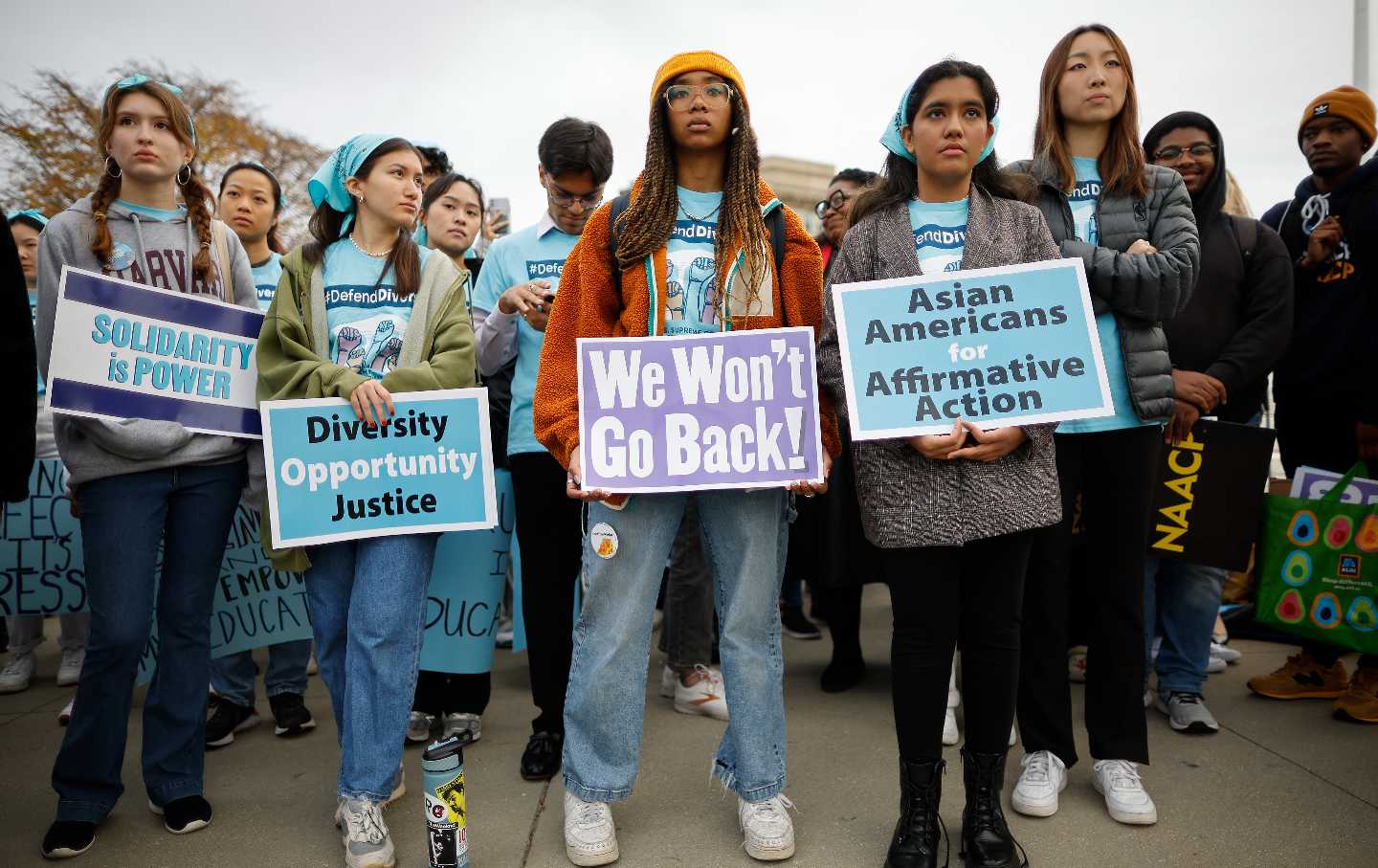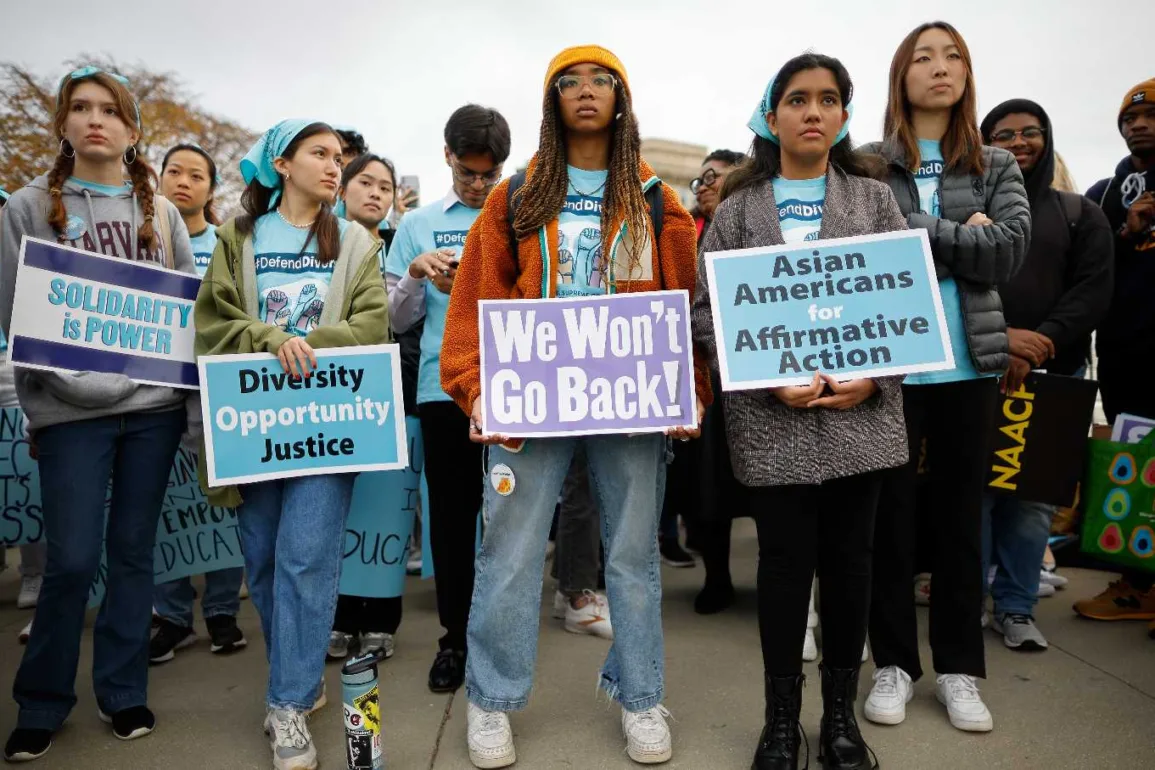In our current system, children of college graduates already have a sizable advantage. But removing legacy and donor preferences is only the first step.

Legacy admissions are once again in the limelight. In an admissions landscape without affirmative action, colleges are facing renewed pressure to eliminate preferences for the children of alumni and donors. Last month, the Department of Education opened an investigation into legacy preferences at Harvard, following a formal complaint from local civil rights groups.
Legacy admissions began at Ivy League schools in the 1920s as a response to the growing number of immigrants—namely, Jews from Eastern Europe—entering elite Protestant institutions. In 1925, Yale admitted legacies “regardless of the number of applicants and the superiority of outside competitors.” Legacy preferences were most prominent at schools in immigrant-dense communities and usually were implemented after a rise in applications from Jews and Catholics. Until the 1960s, legacy status essentially guaranteed admission to many of the top private schools in the country.
While legacy candidates no longer get to skip the admissions process, the boost their applications receive is still significant. At the 30 most selective colleges in the country, having at least one alumni parent is associated with a 45 percent increase in the admissions rate. At Harvard, the acceptance rate for legacy students was 33 percent between 2014 and 2019. This is over five times the rate for other applicants.
Although legacy preferences were originally a symptom of nativism, the rise of affirmative action in the 1970s allowed colleges to prioritize the representation of racial minorities while also pleasing alumni. Affirmative action provided moral cover to legacy and donor admissions— in a lot of ways, affirmative action was mere window dressing for elite colleges.
Race-conscious admissions relied on ideas of reparations and intergenerational justice. Unfortunately, the 1978 Supreme Court case Regents of the University of California v. Bakke found that historical reparations cannot be the constitutional basis for affirmative action. As such, affirmative action failed to target individuals with direct connections to past discrimination. A 2007 study found that 41 percent of incoming Black students at Ivy League schools were first- or second-generation Americans. Even more striking, some estimates find that only 10 percent of Black students at Harvard are Generational African Americans, descendants of enslaved Africans in the United States.
Racial diversity as an educational ideal has ended up holding all the legal weight since the 1978 California v. Bakke decision. The educational benefits of racial diversity, colleges said, were large enough to justify admissions boosts to minority students.
Affirmative action tended to help the most privileged racial minorities—an obvious failing if its leading moral claim was creating opportunity. While there are obvious pedagogical and social gains from racial diversity, it is unclear why they would eclipse the benefits of socioeconomic diversity on campus. At “Ivy-plus” colleges, more than two-thirds of students come from wealthy households. Even affirmative action programs favor the wealthy; at Harvard, 71 percent of Black and Hispanic students come from the top fifth of their respective income quintiles. Beyond racial representation, there is no genuine commitment to diversity.
Over the next few admissions cycles, there will be significant changes to the admissions criteria at the nation’s top schools. We are quickly approaching a crossroads: If schools are complacent, the affirmative action ruling could be detrimental to advances in racial diversity—as some progressive activists have warned. But colleges could also begin to factor in economic disadvantage to admissions decisions, and in the process, finally start meeting some of the unfulfilled promises of affirmative action.
Supporters of affirmative action were forced to accept improved pedagogy as its claim to legitimacy, rather than its clear-headed moral arguments. In effect, this dampened its ability to help direct descendants of racial discrimination as well as minorities who are still struggling to leave poverty-dense communities. Now that the courts have struck down the entire foundation, it’s time to learn from the mistakes of the old paradigm.
The first step is the removal of admissions preferences for the wealthy. Legacy admissions, in a world without affirmative action, are unconscionable. In our current admissions system, where wealth and institutional knowledge directly translate to success, children of college graduates already have a sizable advantage. To give them an extra boost is to implicitly support a hereditary ruling class in this country.
Proponents of legacy admissions claim that alumni donations, which help all students, would plummet if these preferences were removed. Research on the top 100 American universities, however, has found that there is no “causal relationship between legacy preference policies and total alumni giving,” to quote a report from 2010. Even so, the moral case against legacy preferences is strong enough in its own right.
The importance of removing admissions preferences for the wealthy is not just an abstract philosophical exercise. Rather, it is a necessary step for colleges to take if they wish to maintain racial diversity in a post–affirmative action world.
Popular
“swipe left below to view more authors”Swipe →
In 2014, a group of researchers studied the hypothetical outcomes of class-based affirmative action programs at the top 193 schools in the country. Notably, all simulations presumed the absence of preferential treatment for children of alumni, donors, and faculty.
The exercise assumed 250,000 available spots for the incoming freshman class and used statistics from 2014 as the baseline for racial and socioeconomic diversity. A purely merit-based admissions scheme—one that only looked at standardized testing—led to a decrease in representation among every minority group. Even more discouraging, socioeconomic diversity remained unchanged.
For their second simulation, the researchers estimated the effects of hardship on SAT scores. Disadvantage was quantified, then controlled for. In this model, white and Hispanic representation marginally increased while Black and Asian representation slightly decreased; racial diversity was functionally kept intact. Even more impressive, students from the bottom half of the income distribution made up about half of the admissions pool, compared to the baseline of just 14 percent.
Controlling for familial and geographic hardships barely maintained racial diversity. Simply put, class-based affirmative action cannot be effective if affirmative action programs for the wealthy—such as legacy admissions—exist.
In response to such simulations, Harvard stated that using socioeconomic indicators as a proxy for race would “yield a student body in which many of the non-White students would come from modest socioeconomic circumstances.” This change would hurt “other forms of diversity, undermining rather than advancing Harvard’s diversity-related educational objectives.” In other words, Harvard does not want to prioritize socioeconomic diversity if it means having more low-income minorities. Race-neutral affirmative action programs, as admitted by this 2018 report from Harvard University, could preserve racial diversity and even fix a lot of what was flawed with affirmative action.
Two weeks ago, Wesleyan President Michael Roth announced that there will no longer be a “bump in the selection process” for legacy applicants. Johns Hopkins, Carnegie Mellon, and Occidental College have axed legacy admissions as well. While the recently announced investigation by the Department of Education might lead to an enforced removal of legacy preferences, elite colleges and universities should not wait long enough to find out. An opportunity has presented itself: The fall of affirmative action opens the door for an admissions system that doesn’t only favor the wealthy. Removing legacy and donor preferences is the first symbolic and practical step in achieving this. Once access to college is no longer heritable, schools can experiment with race-neutral methods to preserve, and even enhance, racial and socioeconomic diversity.




